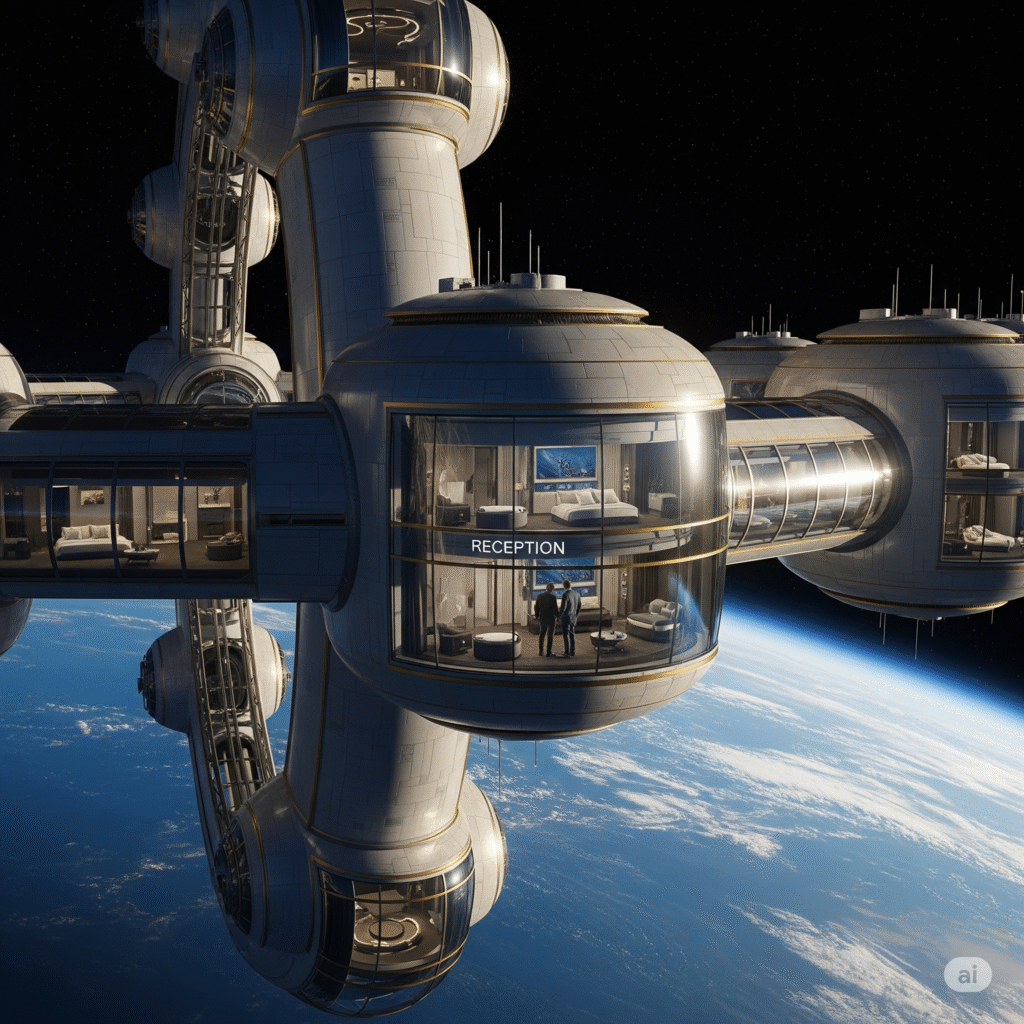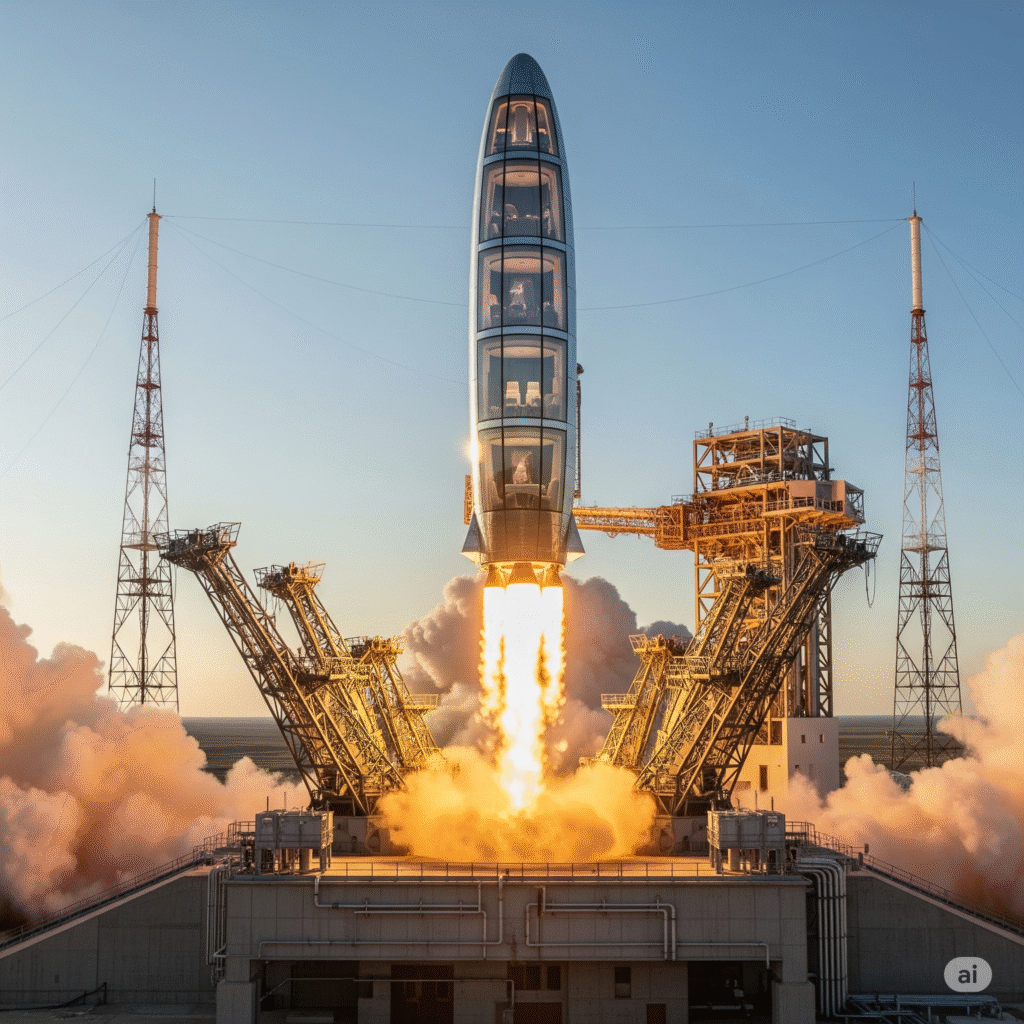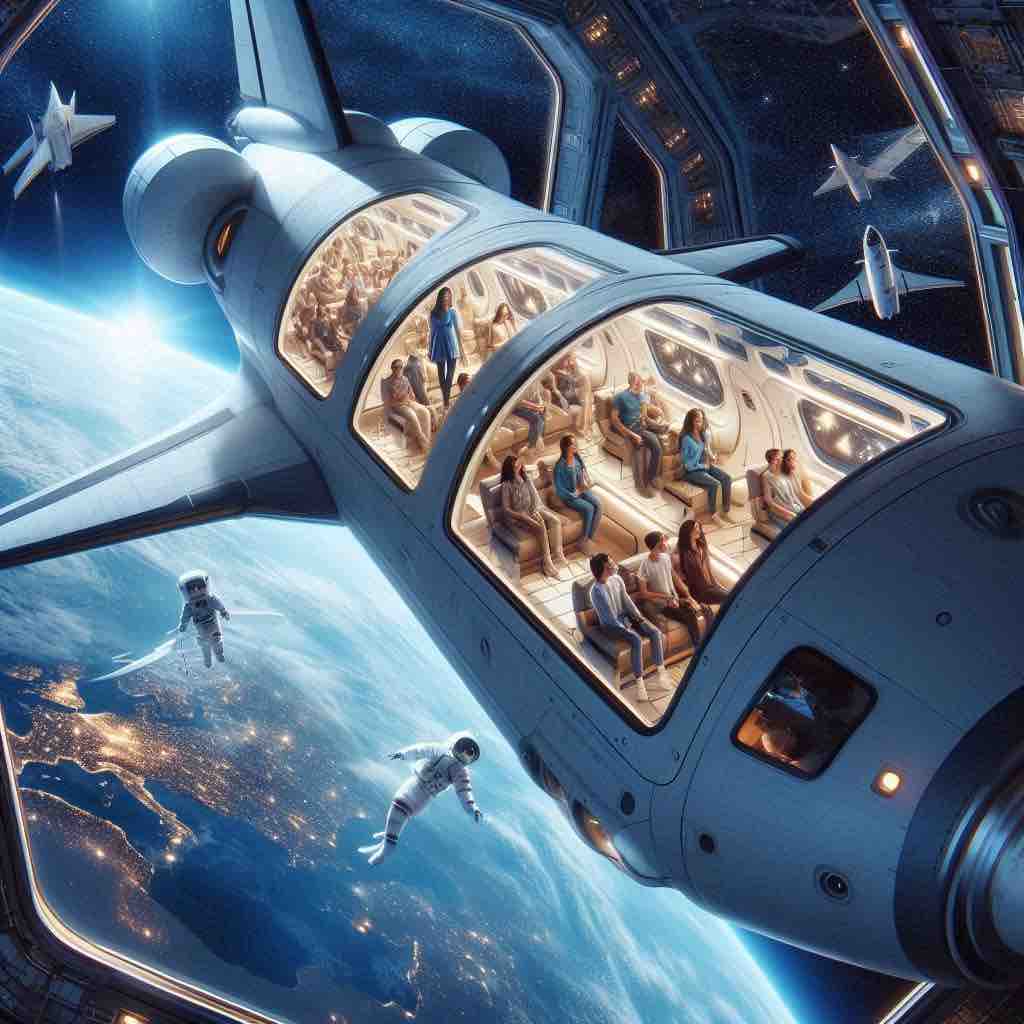Introduction
For decades, space tourism was a fantasy reserved for science fiction and the ultra-wealthy. But in 2025, it’s officially becoming a real-world industry with ticket sales, training programs, and regular launch schedules. Space is no longer just for astronauts. It’s becoming accessible (albeit slowly) to civilians, celebrities, and soon, high-paying thrill-seekers.



The Big Players Making Space Tourism Happen
Several private companies are competing in the race to commercialize space tourism. Here’s where the major contenders stand in mid-2025:
- SpaceX: Elon Musk’s company continues to lead the pack with its Starship launches, which are designed for both space tourism and lunar missions. While the “dearMoon” mission, originally planned for 2026, was cancelled in May 2024, SpaceX’s ambitious plans to make spaceflight a reality for civilians continue to push the industry forward.
- Blue Origin: Jeff Bezos’s firm has now completed more than two dozen successful suborbital flights with its New Shepard rocket. Celebrities, researchers, and paying customers have flown briefly into space, experiencing a few minutes of weightlessness. Recent news from July 2025 confirms they have now flown over 70 people to the edge of space, with regular launches scheduled.
- Virgin Galactic: Richard Branson’s suborbital spaceflights via SpaceShipTwo are currently on hold as the company focuses on the development of its new, more efficient Delta-class vehicles. These new ships are expected to be operational by late 2026 and will significantly increase flight frequency.
- Axiom Space: This startup continues to organize multi-day stays on the International Space Station (ISS) and is constructing the first commercial space station, scheduled to detach from the ISS by the late 2020s. Axiom’s recent Ax-4 mission in June 2025 was a significant step in this plan, sending a diverse crew of private astronauts to the ISS.
What Does a Space Tourist Experience?
Right now, most space tourists go on suborbital flights, which last 10–15 minutes and reach an altitude of about 100 km (the Kármán line). These flights offer:
- Zero Gravity: Passengers experience 3–5 minutes of weightlessness.
- Spectacular Views: The curvature of the Earth, the blackness of space, and the bright blue atmosphere are all visible.
- Training: Prior to flight, tourists undergo 2–5 days of training in emergency procedures, g-forces, and cabin safety.
Some higher-end missions (like those organized by Axiom Space aboard SpaceX’s Crew Dragon) offer multi-day orbital stays, where tourists orbit the Earth every 90 minutes.
How Much Does a Ticket to Space Cost?
As of 2025, prices for commercial spaceflight remain high but are showing signs of gradual change:
- Virgin Galactic: ~$450,000 per seat.
- Blue Origin: Undisclosed pricing, but rumored to be around $300,000–$500,000 per seat.
- Axiom Space: ~$55 million for a multi-day stay on the ISS.
Prices are expected to drop gradually as competition, innovation, and reusability improve.
Environmental and Ethical Concerns
With rising interest in space tourism comes rising scrutiny:
- Carbon Emissions: Rockets emit massive amounts of CO₂, though reusable systems like SpaceX’s Starship are more efficient and are reducing the environmental footprint over the long term.
- Space Debris: Frequent launches raise the risk of orbital congestion and potential collisions.
- Inequality: Critics argue that space tourism is a luxury for the rich while global issues like poverty and climate change remain unsolved.
What’s Next in the Future of Space Tourism?
Looking ahead, exciting developments are on the horizon for commercial spaceflight and beyond:
- Space Hotels: Companies like Orbital Assembly have plans to begin construction on a rotating space hotel as soon as 2026, offering luxury accommodations and amenities in orbit.
- Training Hubs: Private astronaut training centers are popping up worldwide to support the growing demand for civilian space travel.
Summary
If you’re not a millionaire, you might not be flying just yet—but within the next decade, space tourism could become more affordable for a wider range of adventurers, thanks to increased flight frequency and reusable technology.
For more articles in our “Science in Daily Life” series, explore our blog.
The real question is: When will you be ready to go?
Critical Insights: Understanding Sleep Disorders & When to Seek Help
Introduction In…
Unlock Restful Nights: Simple Tips for Improving Sleep Quality Naturally
Introduction Following…
The Essential Guide to Quality Sleep: Your Sleep & Recovery Series Overview
Introduction Welcome…






